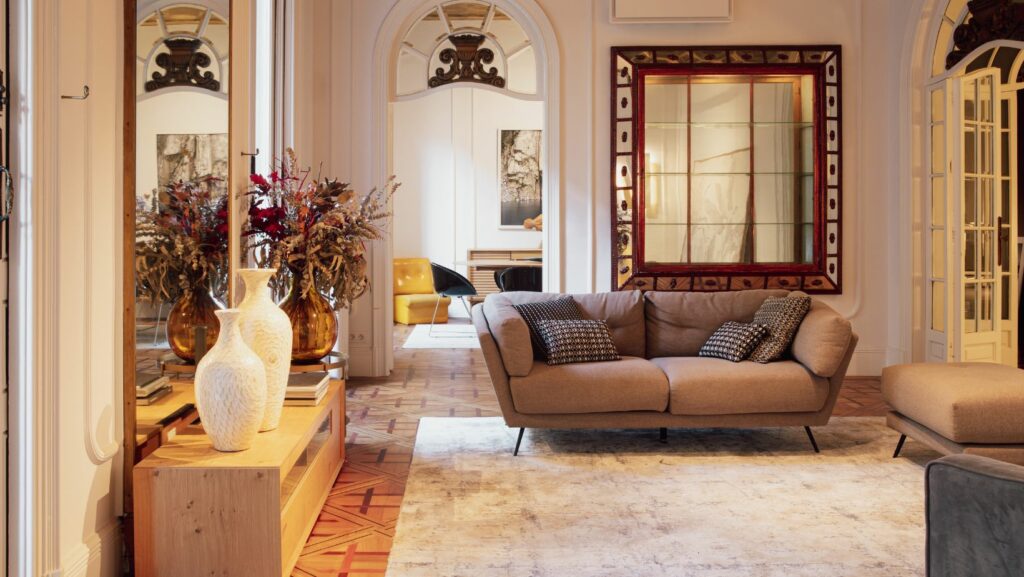
Michelangelo Buonarroti, a towering figure of the Renaissance, left an indelible mark on the world of art with his extraordinary works. From the ethereal beauty of the Sistine Chapel ceiling to the profound expression of human emotion in the statue of David, his art continues to inspire and captivate audiences worldwide. Incorporating Michelangelo’s artwork into your home decor not only enhances the aesthetic value of your space but also connects you to the rich tapestry of art history. This article will explore how you can bring the majesty of Michelangelo into your living environment through thoughtful decoration with his artworks.
To begin with, consider the placement of a centerpiece that captures the essence of Michelangelo’s artistry. A replica of the Pietà, positioned in a serene corner of your living room, can create a focal point of contemplation and beauty. This sculpture, representing Mary holding the body of Jesus after the Crucifixion, showcases Michelangelo’s ability to depict human emotion and physical details with stunning realism. When selecting a replica, look for one that echoes the original’s delicacy and detail to fully convey its emotional depth.
Wall art is another elegant way to incorporate Michelangelo’s creations into your home. High-quality prints of the Sistine Chapel ceiling can transform an ordinary room into a vibrant and inspiring space. Consider using a large, central panel, such as the iconic Creation of Adam, as a mural on your ceiling or wall. This can be complemented by smaller prints of the surrounding panels to create a cohesive Renaissance-themed art space.
When choosing artwork for your home, the scale and color scheme are crucial considerations. Michelangelo’s sculptures, such as Moses or the Dying Slave, can be represented in smaller, meticulously crafted statues placed in niches or on pedestals. These pieces can serve as dramatic decorative elements in minimalist spaces, where their intricate forms and emotional intensity become the room’s visual anchors.
Incorporating elements inspired by Michelangelo’s architectural projects can also enhance your home’s aesthetic. For example, design elements borrowed from the Laurentian Library — such as its staircase and reading room layouts — can be adapted into home library designs. Such adaptations preserve the Renaissance style’s dignity and grandeur, ideally complementing a collection of classical literature and art books.
To ensure authenticity and the highest aesthetic quality, consider investing in museum-quality reproductions of Michelangelo’s artworks. These reproductions are crafted with attention to detail and adherence to the techniques used in the originals. They not only replicate the visual appeal of Michelangelo’s works but also provide a touch of historical elegance to your home decor. Whether it’s a full-scale replica of the David or intricately printed frescoes, these pieces allow art enthusiasts to enjoy a slice of Renaissance beauty in their own space.

Textiles offer another versatile option for integrating Michelangelo’s art into your home decor. Custom tapestries featuring scenes from the Last Judgment or other frescoes can provide a soft and inviting backdrop in both traditional and contemporary settings. These can be used as wall hangings or draped over furniture to add a layer of artistic flair and comfort.
Lighting also plays a key role in setting the right mood for your art-inspired decor. Strategic lighting can enhance the visual impact of Michelangelo’s artworks, highlighting the textures and colors in sculptures and paintings. Soft, ambient lighting can mimic the natural light of an Italian gallery, bringing out the depth and dynamism of each piece.
Additionally, consider the thematic integration of Michelangelo’s artwork with other elements of your home decor. For instance, Renaissance-inspired furniture, with its rich materials and ornate designs, can complement your art pieces, creating a harmonious interior that reflects the opulence and creativity of Michelangelo’s time.
Educational aspects should not be overlooked in your decor scheme. Including informational plaques next to your reproductions can engage visitors, offering insights into the historical and artistic significance of each piece. This not only enhances the aesthetic appeal of your decorations but also enriches the cultural atmosphere of your home.

Finally, for those interested in subtler incorporation of Michelangelo’s works, consider accessories and accents like small fresco prints in ornate frames, or sculptural elements that echo the master’s style in furniture handles and decorative carvings. These minor details can imbue your living space with a sense of Renaissance luxury without overwhelming it.
By choosing the right pieces and considering their placement and complementarity with your existing decor, you can create a home that beautifully showcases the genius of Michelangelo while providing a warm and inviting environment for living and entertaining. Whether through bold, statement-making sculptures or subtle, thematic decor elements, the art of Michelangelo offers endless possibilities to enhance your living space with style and sophistication.












